Source: Chainalysis; Compiled by: Deng Tong, Golden Finance
Global Cryptocurrency Adoption Index Methodology
The Global Cryptocurrency Adoption Index consists of four sub-indices, each based on countries’ use of different types of cryptocurrency services. We rank all 151 countries for which we have sufficient data for each sub-index, weight the rankings based on characteristics such as population size and purchasing power, take the geometric mean of each country’s ranking in these four areas, and then normalize the final number on a scale of 0 to 1 to give each country a score that determines its overall ranking. The closer a country’s final score is to 1, the higher it ranks.
To calculate our sub-indices, we estimate the transaction volume of different types of cryptocurrency services and protocols in each country based on the web traffic patterns of the websites of these services and protocols. We acknowledge that web traffic data is imperfect, as some cryptocurrency users may use VPNs and other similar tools to hide their true physical location. However, given that our index covers hundreds of millions of cryptocurrency transactions and over 13 billion web visits, any misattributed transaction volume due to VPNs is likely to be negligible given the size of the dataset. We also compared the survey results with insights from local crypto experts and operators from around the world, which gave us even more confidence in our approach.
Below is a description of the sub-indices and how they are calculated, as well as improvements to our methodology since last year.
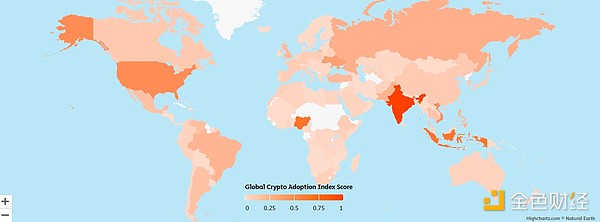
Sub-index Category 1: On-chain cryptocurrency value received by centralized services, weighted by PPP-adjusted GDP per capita
We included this sub-index to rank countries based on the total value of cryptocurrency received by centralized services, and weighted the ranking to favor countries where this amount is more substantial relative to the country’s per capita income. To calculate this number, we estimated the total value received on-chain by users of centralized services in each country and weighted it by PPP-adjusted GDP per capita, which measures the country’s per capita income. The higher the ratio of value received on-chain to GDP per capita after PPP adjustment, the higher the ranking. In other words, if two countries have an equal amount of cryptocurrency received on centralized services, the country with the lower weighted PPP-adjusted GDP per capita will be ranked higher.
Sub-index Category 2: On-chain Retail Crypto Value Received by Centralized Services, Weighted by PPP-Adjusted GDP per capita
We also estimated the activity of non-professional individual cryptocurrency users on centralized services by comparing their transaction value on centralized services to the purchasing power of the average person. We do this by estimating the amount of cryptocurrency received by users on centralized services in each country (similar to Sub-index Category 1), but only counting the value received for retail-sized transactions, which we designate as cryptocurrency transactions worth less than $10,000. We then rank each country based on this metric, but weight it to favor countries with lower PPP-adjusted GDP per capita.
Sub-index Category 3: On-chain Crypto Value Received by DeFi Protocols, Weighted by PPP-adjusted GDP per capita
We rank countries based on their DeFi transaction volume, and weight the rankings to favor countries with lower PPP-adjusted GDP per capita.
Sub-index Category 4: On-chain Retail Crypto Value Received by DeFi Protocols, Weighted by PPP-adjusted GDP per capita
We rank each country based on the volume of DeFi transactions conducted by retail-scale transfers (again, less than $10,000 worth of crypto), and weight it to favor countries with lower PPP-adjusted GDP per capita.
Changes in Methodology
Methodology Change 1: Measuring DeFi Activity
The main change in methodology this year concerns how we measure the value of cryptocurrencies received by decentralized protocols. For DeFi services, we only include value received from suspected personal wallets and exclude value received by other known DeFi wallets. This new approach ensures that the total value received is not inflated by intermediate steps required by some smart contracts.
Here is an example of how a DeFi transfer typically works:
A personal wallet initiates a swap in DeFi protocol A, transferring Ether (ETH) from the personal wallet to the router contract address of DeFi protocol A.
ETH is deposited from the router contract address to the wrapped Ether (wETH) token contract address.
The router contract address receives wETH.
A transfer is made from the router to the decentralized exchange (DEX) pool contract.
The transfer takes place from the DEX pool contract to the router.
Finally, the transfer takes place from the router back to the personal wallet.
According to our new methodology, we only count the first transfer in the above example to determine the total value received by the DeFi protocol. By doing so, we can eliminate intermediary transfers between contracts belonging to the same service provider. This process has resulted in a slight decrease in our estimate of the value received, but it is now a more accurate estimate.
Methodology Change 2: Excluding P2P Exchange Sub-Index
In previous years, we included P2P cryptocurrency exchange trading volume (weighted by PPP per capita and number of internet users) to calculate an overall ranking of global cryptocurrency adoption. This year, we decided to exclude this sub-index due to a significant decrease in activity on P2P exchanges. The closure of LocalBitcoins.com, one of the largest and oldest P2P exchanges, last year also contributed to this decrease.
Top 20 Global Crypto Adoption Index 2024
Central and South Asia & Oceania (CSAO) dominates our 2024 Index, with 7 of the top 20 countries located in the region. As we explore in the full report, CSAO has a unique set of cryptocurrency markets, with high levels of activity among local cryptocurrency exchanges, merchant services, and DeFi.
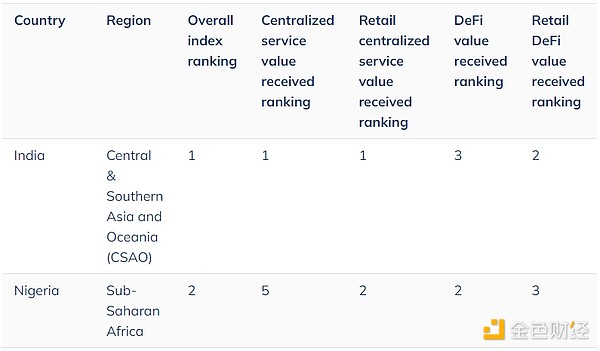

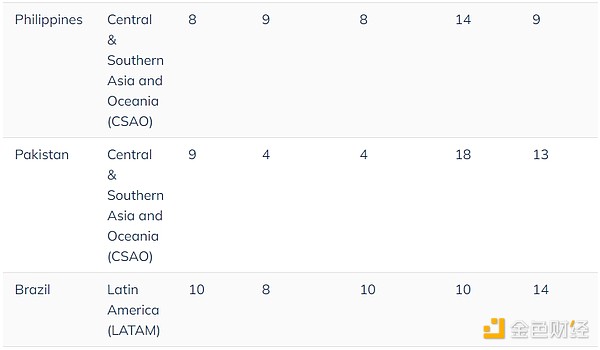
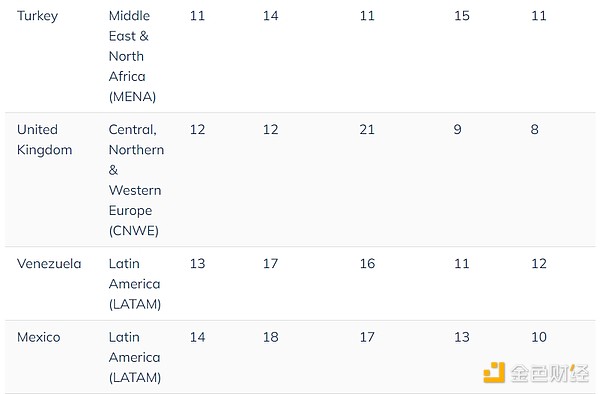
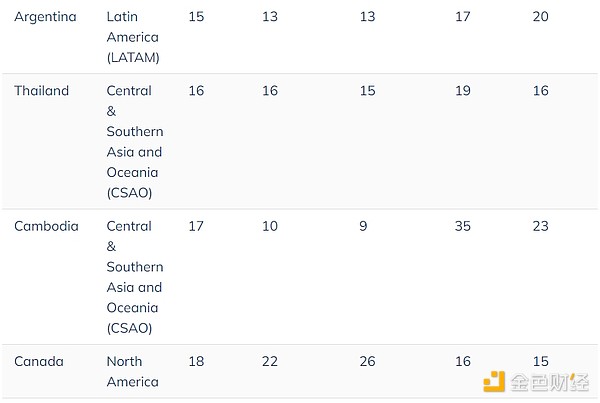

Global Crypto Activity Is Increasing
The total value of global crypto activity increased significantly between Q4 2023 and Q1 2024, reaching levels higher than during the 2021 crypto bull run. We can see this pattern in the chart below, where we apply our adoption index methodology globally, adding up the index scores for all 151 countries for each quarter from Q3 2021 to Q2 2024, and then re-indexing it again to show the growth of global adoption over time.
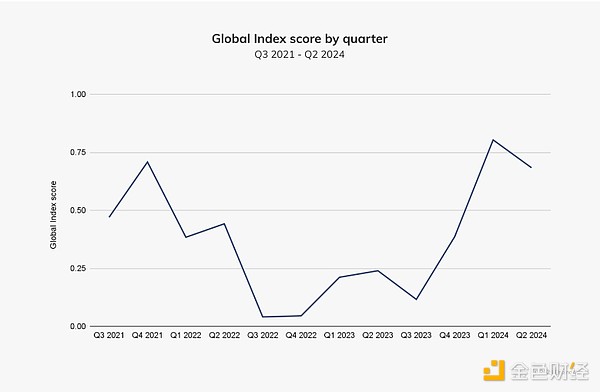
Last year, the growth in cryptocurrency adoption was mainly driven by low- and middle-income countries. However, this year, cryptocurrency activity has increased in countries across all income brackets, while high-income countries have retreated since the beginning of 2024.
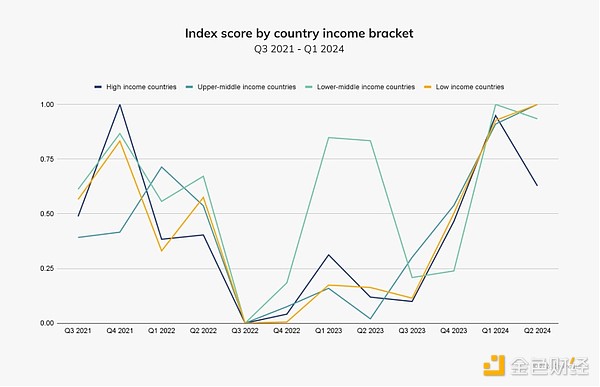
The launch of a Bitcoin ETF in the United States triggered an increase in the total value of Bitcoin activity in all regions, with year-on-year growth particularly strong in institutional-scale transfers and higher-income regions such as North America and Western Europe. In contrast, stablecoins have seen higher year-on-year growth in retail and professional-scale transfers, and are supporting real use cases in low-income and lower-middle-income countries such as Sub-Saharan Africa and Latin America.

When we look at year-over-year growth by service type, we see significant increases in DeFi activity in Sub-Saharan Africa, Latin America, and Eastern Europe. As shown in the chart above, this growth may have driven increased altcoin activity in these regions.
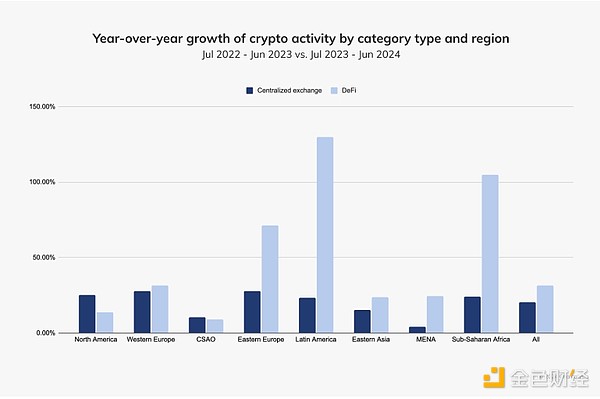
 JinseFinance
JinseFinance
 JinseFinance
JinseFinance JinseFinance
JinseFinance Weiliang
Weiliang Alex
Alex Bitcoinworld
Bitcoinworld Beincrypto
Beincrypto Bitcoinist
Bitcoinist Bitcoinist
Bitcoinist Bitcoinist
Bitcoinist Cointelegraph
Cointelegraph